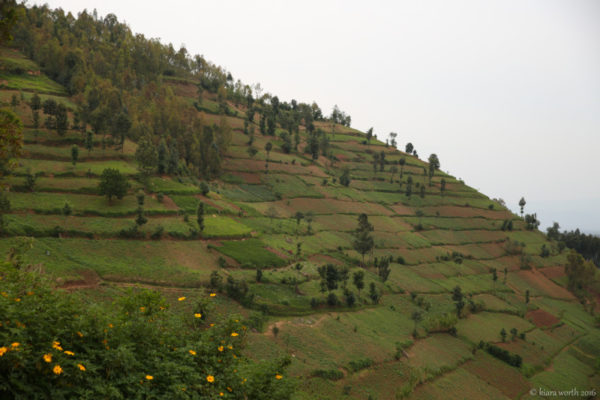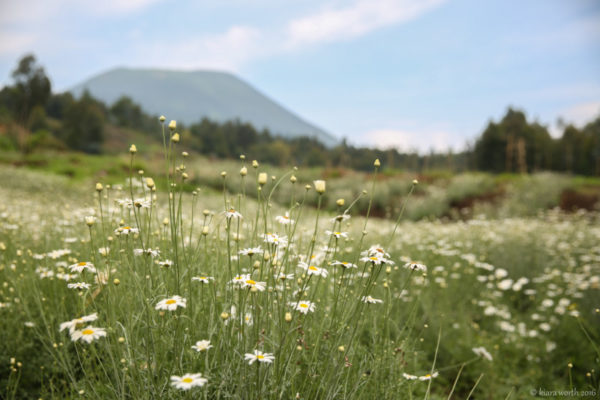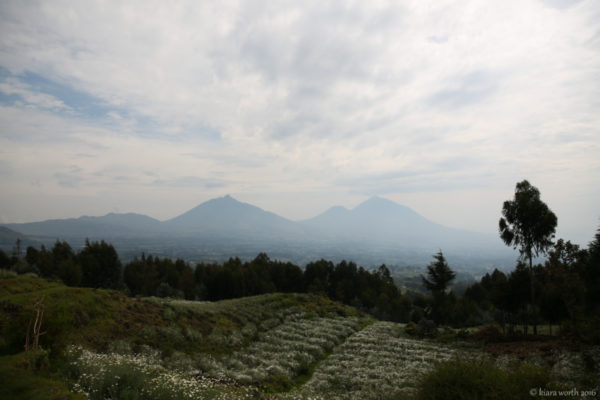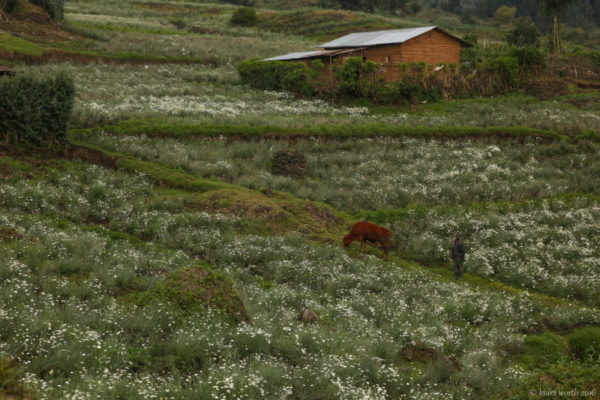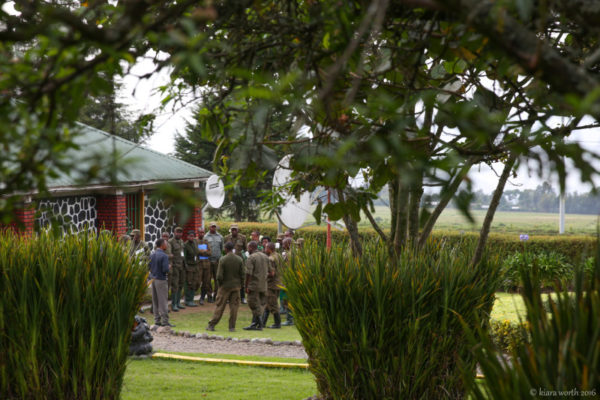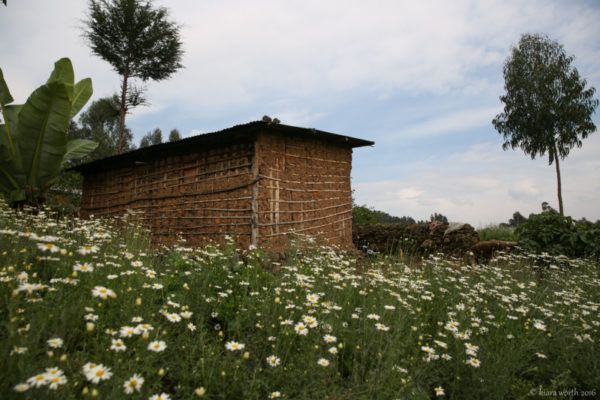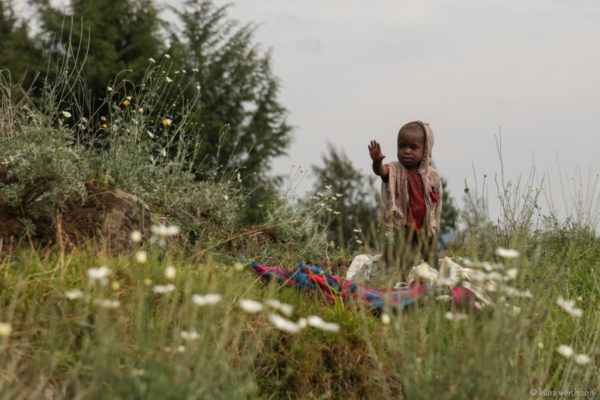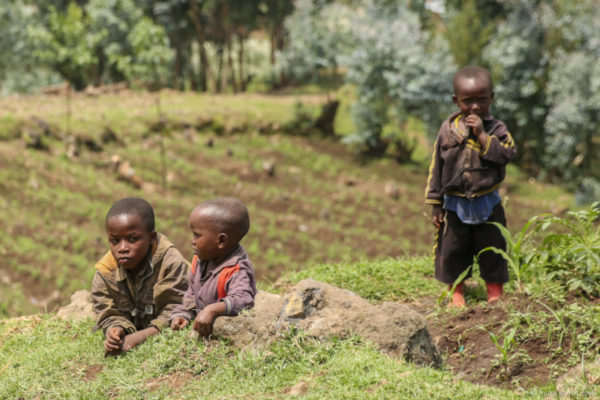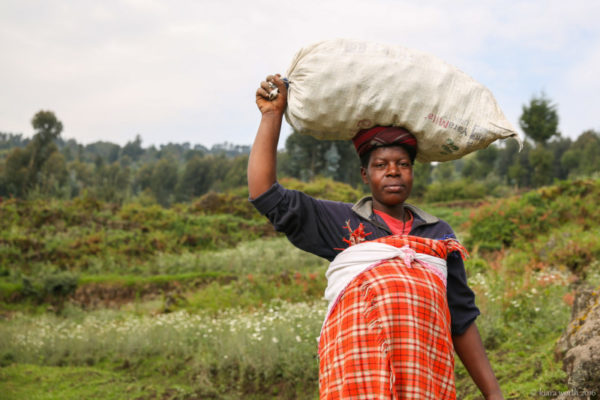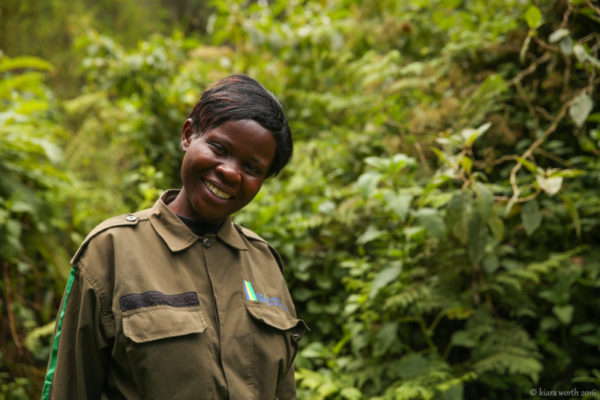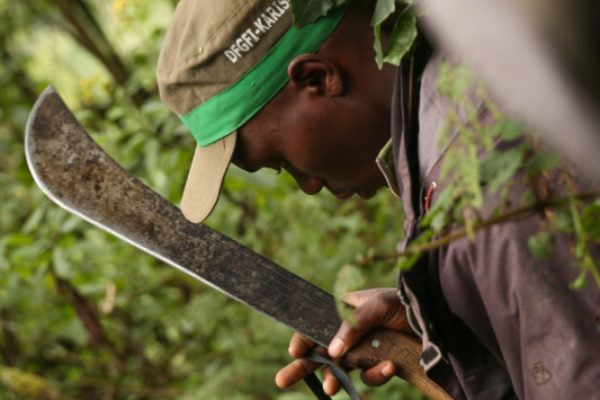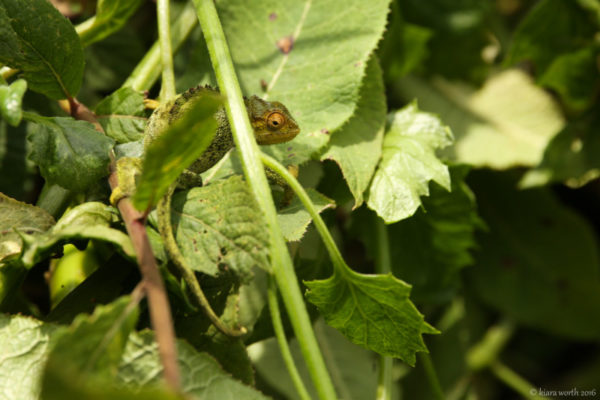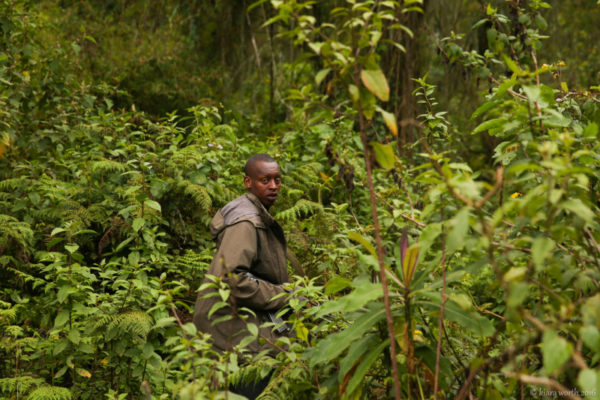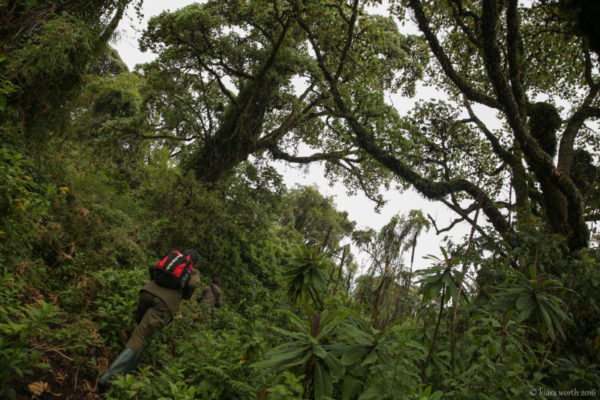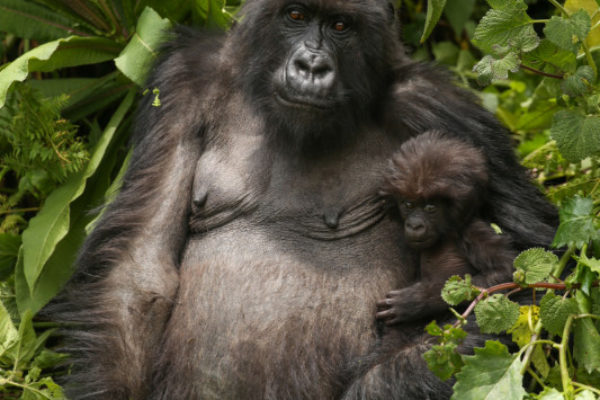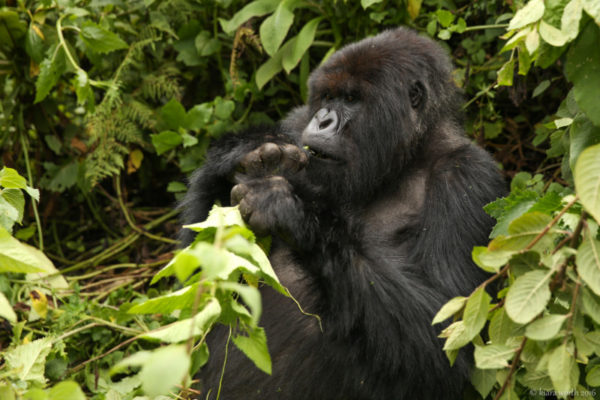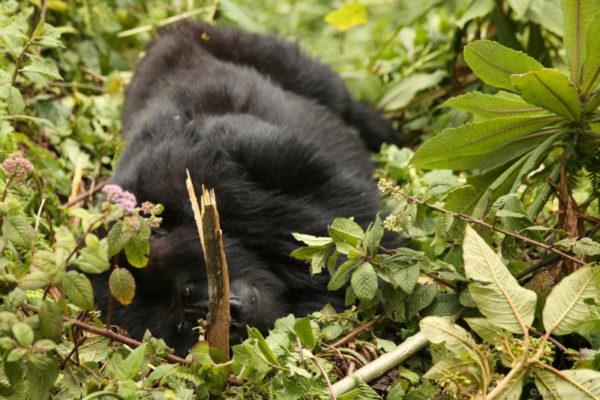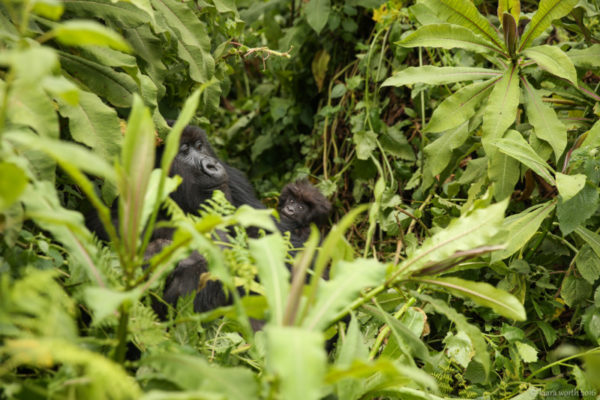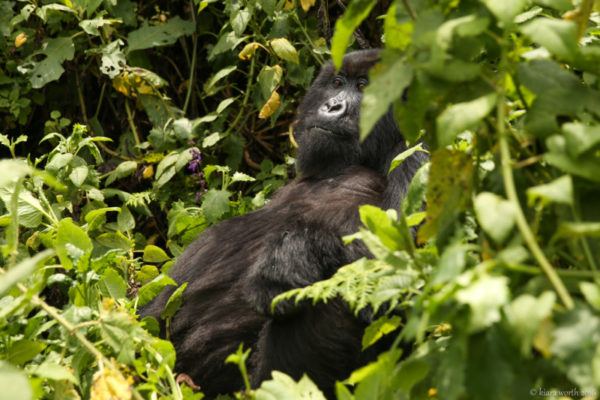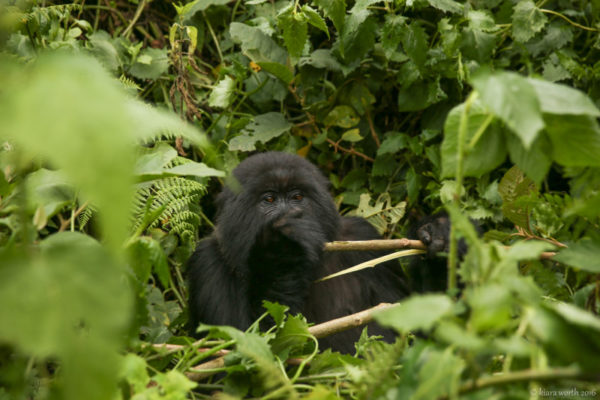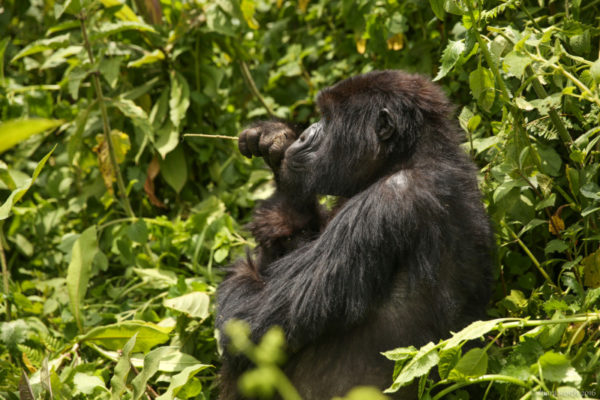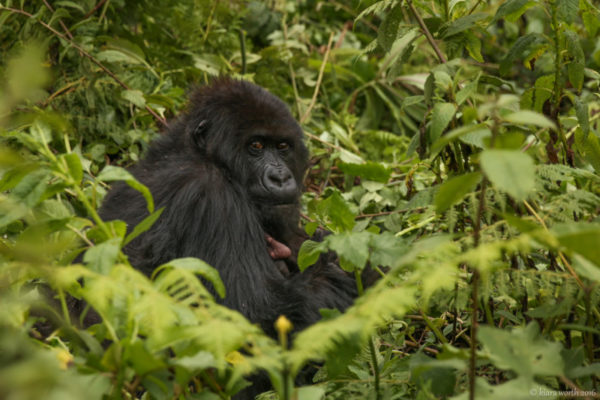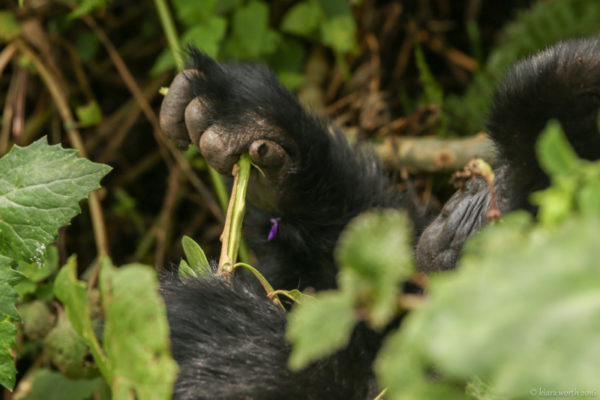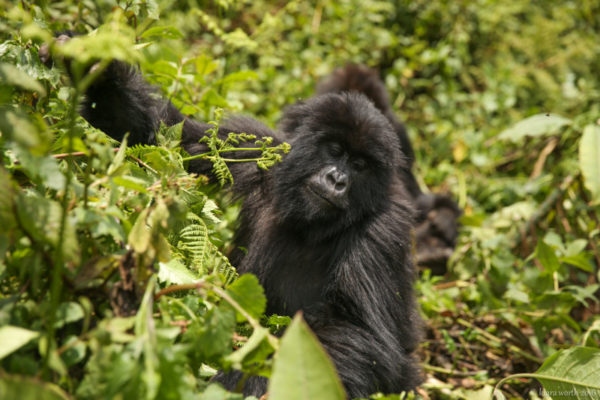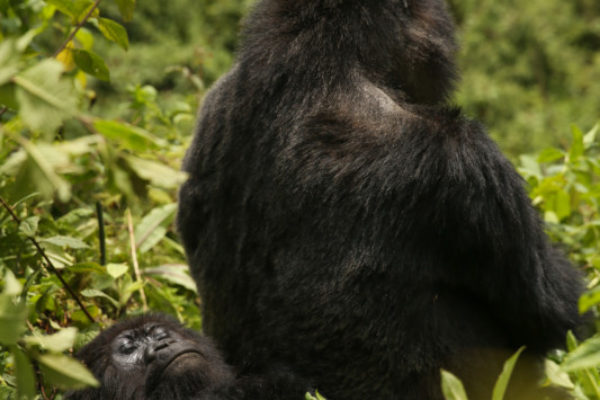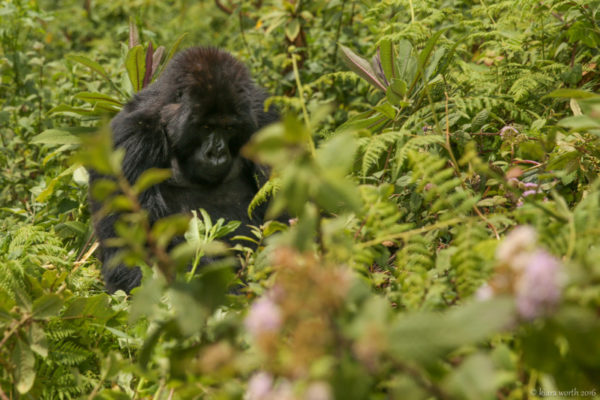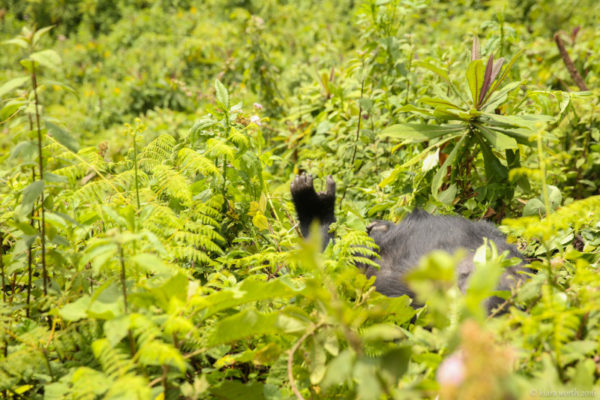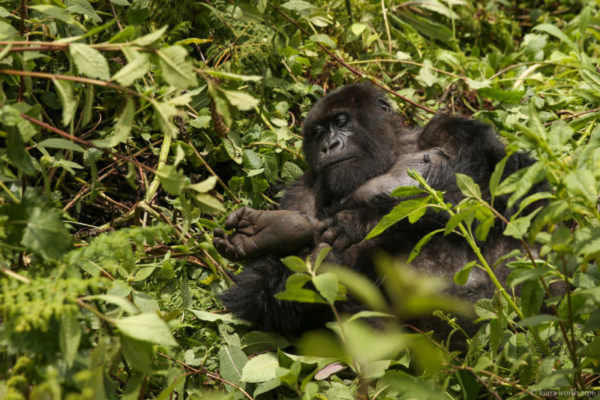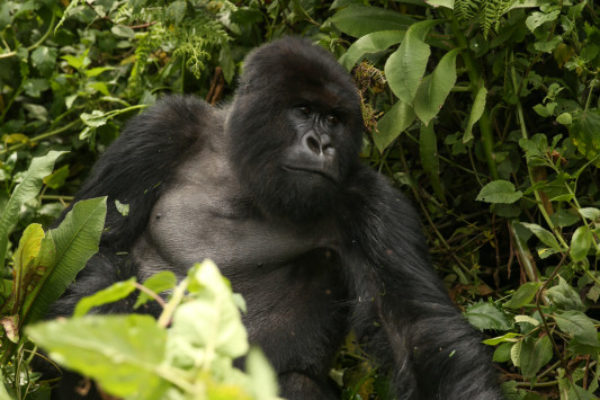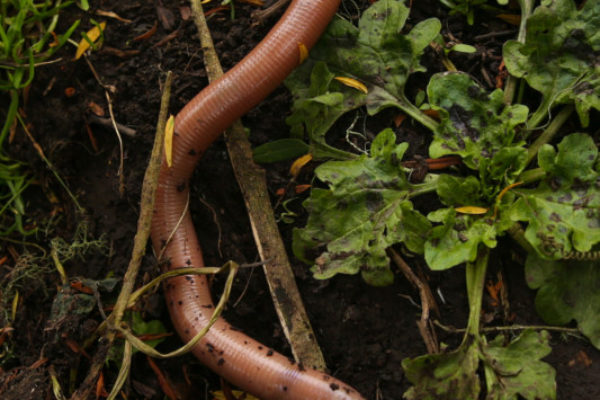Gorilla trekking in Rwanda
October 2016
The morning began early. At 4:30am our guide Gerald from Primate Safaris picked us up in a dark green Land Cruiser and we drove 90km northwest from Kigali to Volcanoes National Park in Rwanda. We were on our way to trek through the rainforest to see the critically endangered mountain gorillas. Sharing 95% of our genes, there are only 880 gorillas left in the wild and only a handful of people have the opportunity to see them in their natural environment.
As we wound our way through the land of a thousand hills, the morning light glistened across endless cultivated fields. We saw women hoeing the earth, men carrying enormous bags of potatoes, young boys waiting at the corner with their bike-taxis, a thriving, bustling environment unfolded around us. We were enraptured.

“Is that what you’re wearing for the trek?” asked Gerald as he eyed us through the rear view mirror.
I looked at my friend Annelies, who was wearing a thin cotton reversible top – she had chosen to wear the side with stripes fearing that the other side, a leopard print, might scare the gorillas. I was fashioned in my Indiana Jones attire; khaki cotton pants and a long sleeved white cotton top. It had briefly occurred to us before we left South Africa that we might need something more substantial, but here we were.
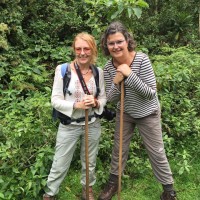 “Yes, this is what we’re wearing.”
“Yes, this is what we’re wearing.”
“Ok. Do you have gloves?” asked Gerald.
“No,” we replied.
“What about snake gaiters?”
“Um, no.”
Perhaps we were a little unprepared.
We arrived at the park’s headquarters in Kinigi at 7am and enjoyed a strong cup of coffee before joining our fellow trekkers. Treks are done with a maximum of eight people – selecting a short or medium distance, you follow trackers through the rainforest and spend one hour with the gorillas once you find them. We had opted for the medium trek and today we were visiting the Titus family – the same family studied by Dian Fossey during her time in Rwanda.
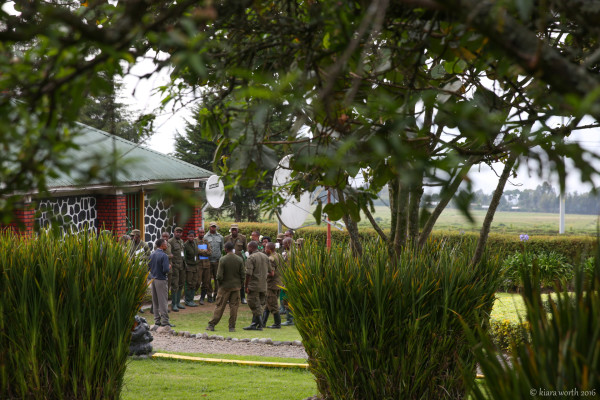
Guides from Volcanoes National Park gather at the Kinigi headquarters
The adventure began with an uphill hike, the pyrethrum flowers carpeting the volcanic landscape in a cheerful embrace and bright purple flowers decorating countless potato plants reaching across the fields. Children ran out from mud huts to greet us and people in the fields stopped to watch us walk by.
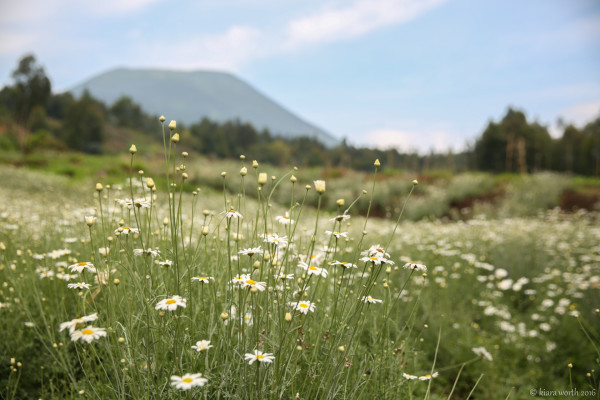
Fields of pyrethrum flowers carpet the foothills of Mount Bisoke
At close to 3,000 metres we neared the top of the mountain and met the stonewall boundary leading into the rainforest. We met three trackers who explained they had located the gorillas and we would walk about 45 minutes to reach them – now was the time to put on our protective gear.
Our guide looked at Annelies and I around the same time we looked at each other, wondering how we hadn’t planned this better.
“You two can just tuck your pants into your socks,” she said.
We climbed over a rough log bridge and were immediately consumed by the density of the forest, the wet richness of the earth, the lushness of the plants, the web of vines that tangled between the soaring trees. Our trackers expertly slashed a trail with their machetes and we crunched our way through like heroes in an adventure movie.

Our adventure into the rainforest begins
The thing they leave out in those movies, though, are the stinging nettles.
It swiftly became apparent that the reason you needed snake gaiters was not for the snakes, but to add an extra layer of protection against the nettles – the slightest touch induces a fiery, burning pain across your skin and we knew we were in trouble when even the guide put on an extra layer. Annelies and I spent the next two days thinking we still had thorns in our pants.
We trekked through the forest, mesmerised with every step, until the trackers informed us we were close. We left our bags, practiced our gorilla grunts and silently crested the hill to where they were.
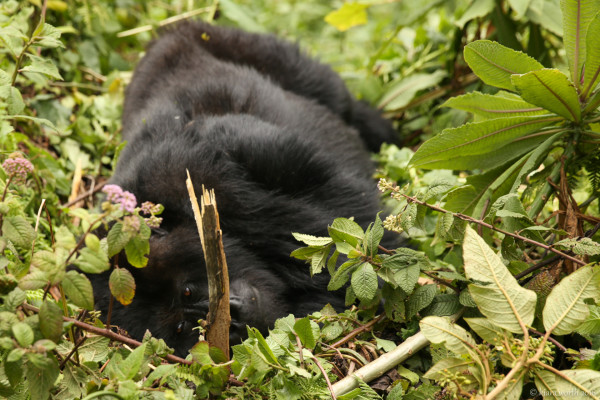
Our first glimpse of the gorilla family
Our first encounter was a young male, lazily stretched out, who cast a disinterested glance towards us as we crept past. We then met the silverback, Pato, who sat protectively near one of the females and her two-month old baby. We watched as the mother played with her child, kissing her feet and tussling her hair with the adoration that every new mother has.
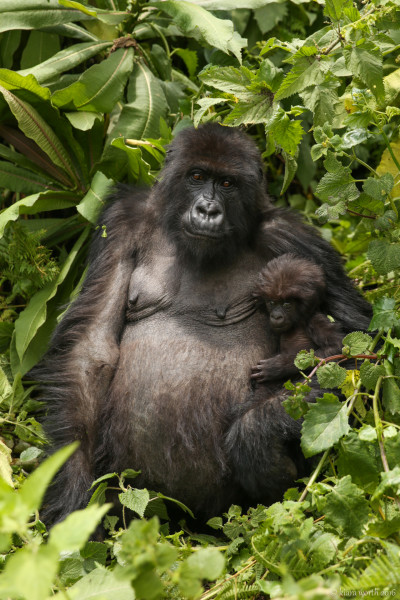
As if on cue, mother and daughter pose for their portrait
We spent the next hour with them, watching them sleep and stretch out in the warm sun, a lazy yawn before heading over to a shadier spot. We saw their magnificent hands grabbing plants and leaves for food, their softness belying their strength, and their humanness present in every movement. We watched the baby climbing across her mother and saw those inquisitive eyes looking at us from beneath her punk-rock hairdo.

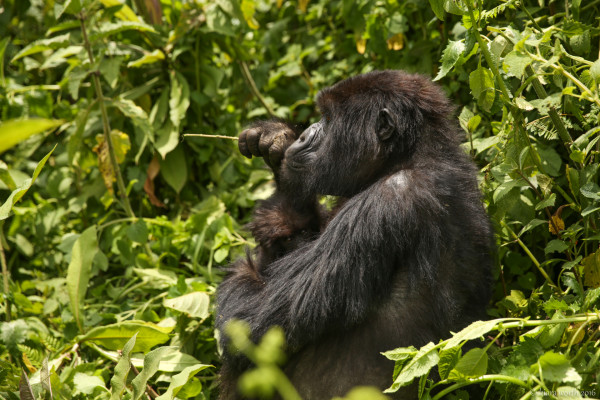
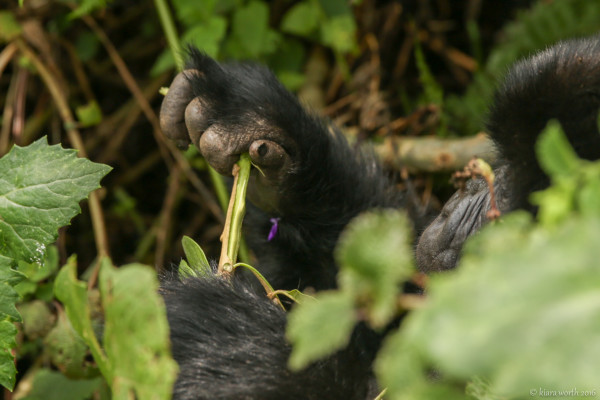
The gorillas seemed particularly nonchalant about our presence, simply pushing us aside if we were in their way and carrying on with their day as usual. It was hard not to be moved by their trusting nature and the family connections that were so visibly strong.
It was also hard not to think how precariously close to extinction these beautiful creatures had come, and continue to be, and we talked about this as we made our way back down the mountain. Conservation efforts such as these have undoubtedly helped save the gorillas but there is still much to be achieved in the protection of earth’s species. With every step leading away from the gorillas we realised, more and more, what an incredible gift that hour had been.
